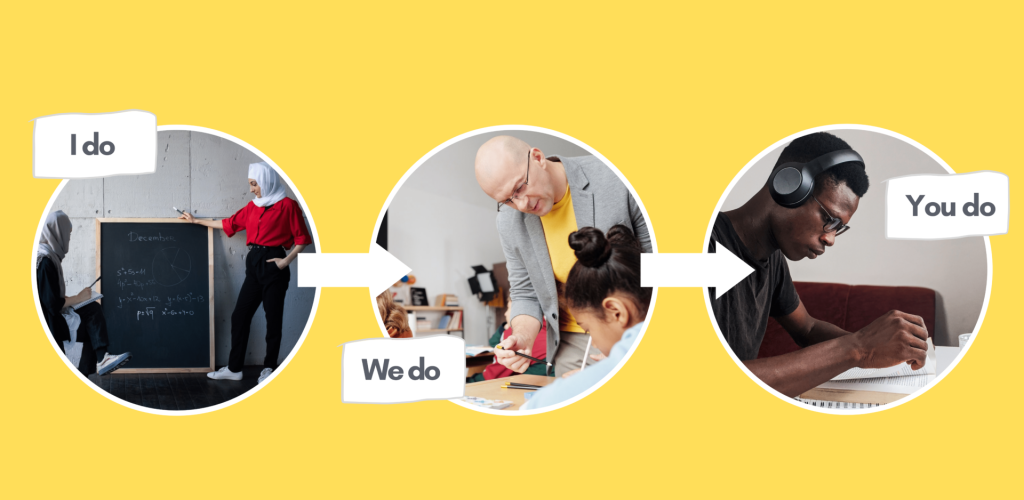While teaching methods for some subjects are easily modified to suit the online learning environment—and others might even be improved with the use of video or interactives that are not possible in traditional classrooms—there is one aspect of online learning that is difficult for teachers and learners alike: solving complex problems in math, physics, statistics, and similar subjects. These problems have multiple details and steps that must be strictly followed. How can this be done effectively online?
One possible solution could be the “I do – We do – You do” technique, often used with younger learners but equally applicable to older learners.

In the “I do – We do – You do” technique, the instructor first demonstrates a skill (I do), explicitly teaching learners how to achieve it; then supports learners as they attempt the skill on their own (We do); and finally encourages learners to practice the skill on their own (You do).
Let’s see how this could work for solving complex problems online, both in a live classroom and in an asynchronous instructor-independent course.
In a live classroom
In a live classroom conducted through videoconferencing, instructors can interact with learners through the process, guiding and supporting learners as necessary.
- I do – The instructor demonstrates the solution to a problem step by step, explaining what is happening at each step. It’s often helpful to use a slide deck, with a different step or section of the problem on each slide.
- We do – The instructor displays a similar problem, and each learner solves the first step. The instructor then completes that step so that learners can see if they’ve got it right. The instructor explains the technique used to complete that step and checks if the learners have any questions. This process is repeated for each step until the problem is solved.
- You do – At this stage, learners solve a complete problem on their own. The instructor then demonstrates the solution or shows the learners the worked example of the problem so that they can compare their work to it.
In an asynchronous online course
In an asynchronous online course on an online learning platform, there is no instructor at hand to address difficulties the learners may face. However, the “I do – We do – You do” technique can be modified to fit the asynchronous model, as well.
- I do – The platform presents the learners with a problem. To do this effectively, add a document with a worked example, with an explanation of what was done at each step, as well as a video with the instructor working out the same problem and explaining each step. Presenting the same content in different ways allows learners to choose the method they understand best.
- We do – At this stage, the platform presents the learners with a different problem. Using the assessment features, add a section for each step of the problem. You can use the calculation features and multiple-choice or free response questions. After every step, add a multiple-choice question asking what needs to be done next. (The goal of this stage is not to test the students but to jog their memory.) After the learner has attempted the question, they can access a video with an instructor working out that step and a page showing the completed step. This content should be accessible only once a student has attempted the step.
- You do – Learners are given a list of problems to solve and then the answer keys and worked out solutions (with all the steps included). Videos of the instructor working out and explaining each problem would be very helpful here, as well.
Creating the content to use this technique might be time-consuming, but once it is done the videos and examples are almost infinitely reusable and, hopefully, your students can master the problems they need to know for your course.



